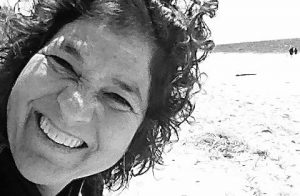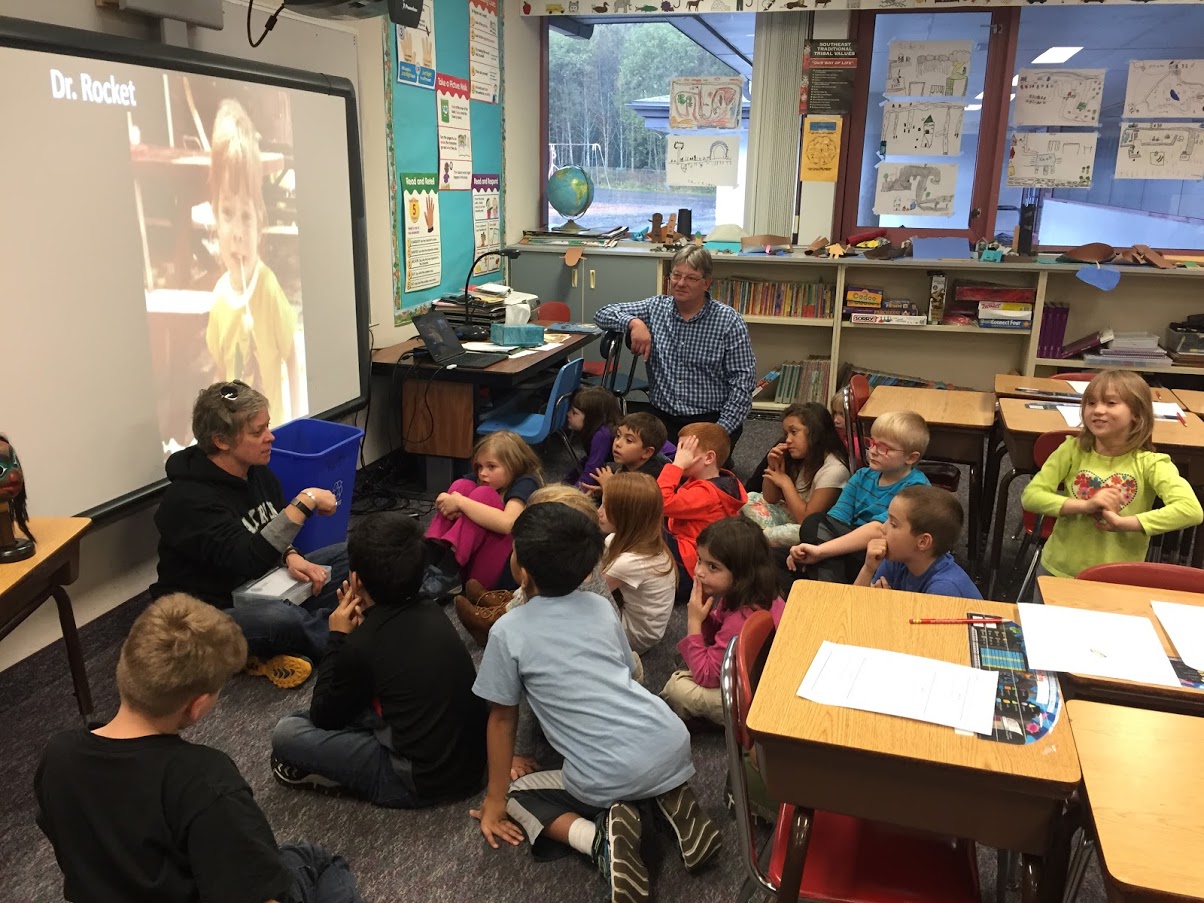Science Helps to Close Sitka Achievement Gap

By Lisa Busch, Executive Director, Sitka Sound Science Center
The Sitka School District is making progress in closing the academic achievement gap in science among Alaska Natives and economically disadvantaged students. Furthermore, Sitka students have consistently outperformed statewide results on the Alaska Science Assessment. There are a number of factors that contribute to a quality science education program. We believe that the expanded Sitka Scientists in the Schools program is a contributing factor to student success in science.
The Sitka Scientists in the Schools (SIS) program is based on the belief that students who work with a diversity of scientists from earliest of years and regularly throughout their entire school career, become enthused about working as a scientist and better understand how the scientific process works. SIS carefully coordinates scientists, teachers, state standards and hands on activities. “The intent is for the program to deliberately build understanding and enthusiasm for science in a way that complements and strengthens the existing curriculum,” says Janet Clarke, SSSC Education Director who oversees the program.
Dr. Lara Roketenetz from the University of Akron engages students in biomimicry and shows Sitka second graders a picture of herself when she was in second grade.
SIS began in 1997 with the nonprofit Sitka WhaleFest, an annual celebration of our marine environment that brings scientists to Sitka each November. The first SIS was a simple driveby educational experience and a dismal failure due to a lack of advanced planning. We quickly regrouped with teachers and scientists, creating the foundation of the current successful model. In 2012, the nonprofit Sitka Sound Science Center (SSSC) merged with Sitka WhaleFest and currently administers the SIS program. Today the well-coordinated program runs throughout the academic school year, and brings scientists into 9 schools, and over 73 different classrooms PreK to 12 each year. The program is also brought to Mt. Edgecumbe High School.
How did we make a success out of that original dismal failure 20 years ago? “ We listened to what we did wrong and made changes,” says project originator marine biologist Jan Straley, from the University of Alaska Southeast. Straley points out that scientists needed to understand the learning capacity and developmental abilities of each grade level and the teachers needed to be convinced SIS was worthwhile.
Today Sitka Sound Science Center science educators ( Clarke and SSSC ed coordinator, Kristina Tirman) serve as liaisons between teachers, classrooms and scientists. The educators know the developmental stages for students (i.e. can kindergartners blow up a balloon? ) Pre SIS consultation allows teachers to voice where they need help meeting state standards and when lessons will fit into the existing curriculum. Before the scientist’s visit, the SIS science educators prepare and deliver lessons to students about basic content and expectations. Requiring teachers to be in the classroom and engaged in the program improves the comfort level for some teachers lacking experience teaching science. Scientists are trained in classroom parameters and basic science communication skills. They are encouraged to drop unnecessary technical language, convey their passion about what they study, and share openly their failures and successes. The scientists appreciate the facilitation and the learning experience of working in a classroom.
In 2010, the strategic move was made to have SIS in every grade level (starting in kindergarten) and SIS was expanded throughout and the school year. This was made possible by five years of grant funding that allowed for continuity and planning.
However, the real success of the SIS program comes from embracing Sitka as a spectacular natural classroom, emphasizing science surrounds us, and we use it every day. Foremost to the success of SIS is the team of collaborators with the same vision to provide all students the same opportunity to learn about science. Here is a short video about the program which had been funded by the USDA.
# # #
The views expressed here are the writer’s and are not necessarily endorsed by the Association of Alaska School Boards. AASB welcomes diverse perspectives and civil discourse. To submit a Guest Column for consideration, see our Guest Column Guidelines and email your 400-1000 word submission HERE.

